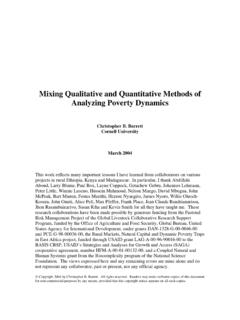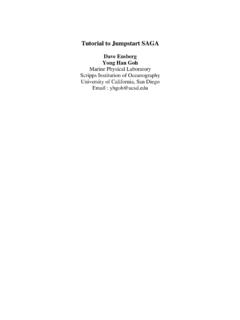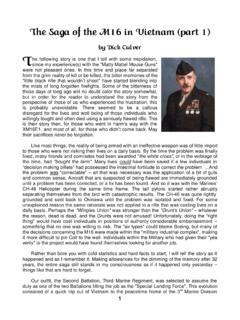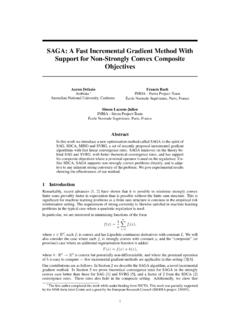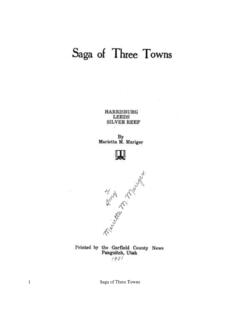Transcription of Contextualising conflict: Introduced institutions and ...
1 Fred Zaal Page 1 22/06/2006 Paper for the World bank/ ILRI/ saga conference 27-28 June 2006 Contextualising conflict: Introduced institutions and political networks combating Pastoral Poverty Fred Zaal Morgan Ole Siloma IntroductioniPoverty and conflict both bring to mind images of destitution. Conflict causes destruction, destitution and disruption of society. The resources to which people have access are damaged to the degree that livelihoods are threatened and poverty is increased. Poverty may also lead to conflict as righteous claims on resources are not met (Verstegen 2001) and scarce resources are competed about (Homer-Dixon 1999). However, this last relationship may be a simplification, as there are many other causes for conflict that hide behind this simple explanation.
2 For example, it may be that not the poor among themselves compete for scarce resources, but that parties previously not involved start to compete with the local poor. The poor may not even have the resources to start a conflict, but rather the well off who through a lack of political, social and cultural mechanisms for control, compete freely for access to resources. As conflict-resolution mechanisms are likely to be absent in those cases, there is very little likelihood of conflicts being moderated once they break out unhindered. In fact, conflicts may be the unavoidable outcome in any society where processes of resource access and distribution are not handled through established political institutions and their controlling elites (Verstegen 2001). It hardly needs repeating that most pastoral populations are marginal in the spatial, economic, social and cultural meaning of the concept.
3 However, the various forms of marginality are not necessarily related (Kabeer 2000). This paper focuses on a conflict over forest resources in the Loita Maasai area in Narok District, Kenya. Whilst it can certainly be said that the pastoral Loita Maasai1 are spatially and economically marginal and poor in many definitions of the concept2, they are not marginal in an institutional and political sense, at least, not any more. This paper focuses on this institutional side of pastoral society and tries to present a narrative through which the conflict can be understood. The paper shows that through their institutional wealth (their social capital), the Loita Maasai have been able to organise themselves politically and defend their ownership of and access to a very crucial resource.
4 The paper also shows that the absence of established equitable political institutions for resource access can be solved through outside intervention, provided the proper relationships are forged with other political forces within the country. The 1 The word Loita will be used henceforth for both the people and their territory. 2 Though not in their own definitions of wealth and poverty as on one important determinant of wealth: the ownership of animals, they are certainly not very poor. 1mobilisation and generation of political institutions may form a starting point for improving access to scarce resources for the poor and thus the fight against marginality. We feel political institutions are often neglected as changing them goes against the status quo even within pastoral society.
5 Theory of institutions in resource conflict Within any society there are scarce resources, so that access to these resources needs to be regulated, whether they be arable land or parking space (Hardin 1977). The discussion on environmental entitlements (Leach et al. 1999) is based on this assumption. In this view, institutions at various levels (local, regional, national) manage the process of access, turning resources into endowments. This process, the endowment mapping process, develops the idea that resources are valuable and can be used for the generation of entitlements and wealth. Subsequently, there are institutions that moderate the process of turning these endowments into entitlements. These are used to develop capabilities of actors. These in turn influence resource availability, and the endowments and entitlements mapping processes whereby the distribution of access and control is changed or strengthened.
6 The attention in all of this process is on the internal distribution of benefits, within a context of adaptation of society to changing environments through their institutions . Overall, this is a harmonious model. However, as Devereux shows, there are extra-legal transfers that change the distribution of benefits (Devereux 2001). Extra-legal transfers may occur at the higher level of institutions , where communities compete for resources, or of individuals misusing institutions for their private benefit. These types of resource conflicts do not easily fit in the framework of Leach et al. Especially if these institutions are Government institutions , there is a problem of the legitimacy of the state and its role in the brokering of access. If the legitimacy of state institutions is questioned, an important instrument for resource mapping and conflict resolution is eroded.
7 It depends on the level of political awareness within the population and their leaders whether the victims resent the government, or the individuals within it who misuse the institution. If the latter happens, they may find alliances within the state apparatus to link up with. We think that the present case is one of those, and our idea is that the traditional socio-economic and political institutions that were available to the Loita Maasai have been used profitably to generate linkages with other, newer and more powerful institutions to attain control over threatened resources. This process is by no means finished, it is still in full development, and our earlier assessment of it (Ole Siloma and Zaal 2005) is much more positive on the impact of this neo-African Governance system that has developed than we are now.
8 There is another issue as well. The process of balancing the claims over resources of various stakeholders is a political process. The legitimacy of this political process however is related to the degree by which the population within the judicial territory of the state that organises the process has underwritten it. By the latter we not only mean that individuals may be seen to misuse these institutions , but that the institutions themselves are not considered legitimate for the purpose of, in this case, mitigating access to local resources. The population may not fully support the legitimacy of the political institutions at state level, the political process related to it, and the outcome of this process in terms of forest management decisions and the distribution of outcomes.
9 2 As one of the most significant developments in the past few decades, governance refers to the patterns of collaboration that emerge between public, private and civil society actors in the provisioning of public goods or the satisfaction of common needs (Pierre & Guy Peters 2000). It encompasses both the process of interaction (and the way this has become institutionalised) and the outcomes of such interaction (affecting the livelihoods of people). Furthermore, it includes both a vertical dimension (for example across different levels of government; decentralisation), and a horizontal dimension (for example dissimilar types of organisations and institutions participating at the same level for service delivery). As it links the management of society s natural resources with the political process of providing access to the outcomes of their use, the impact of this development on poverty is considerable.
10 This is especially so since the poorest depend in a higher measure and a much more direct way on these natural resources than the wealthy (Reitsma et al 1997). This has supported the renewed interest for non-government organisations in the framework of governance systems for resource access and services delivery (Kaldor 2003, Van Westen 2001). This means that political-institutional innovations that promise improvement in terms of political participation of the population in their society will have to come from levels other than national government. Formal systems are changing, as the trend is moving away from government and towards ideas of governance based on the role of civil society and the private sector. These sectors merge with what is left of traditional systems in quite unexpected ways, and with unexpected outcomes (Ole Siloma & Zaal 2005.)
